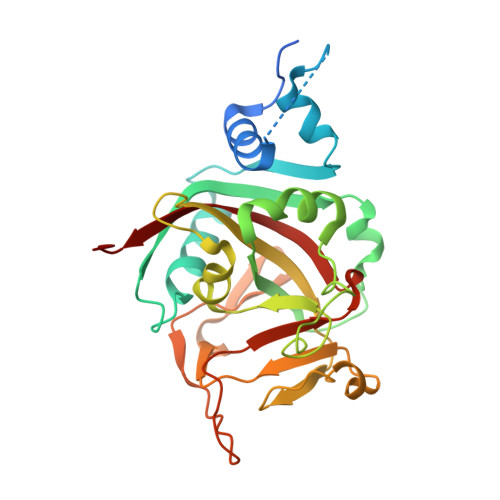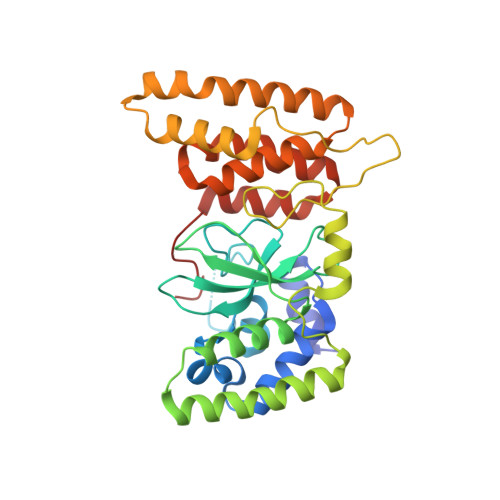HPF1 completes the PARP active site for DNA damage-induced ADP-ribosylation.
Suskiewicz, M.J., Zobel, F., Ogden, T.E.H., Fontana, P., Ariza, A., Yang, J.C., Zhu, K., Bracken, L., Hawthorne, W.J., Ahel, D., Neuhaus, D., Ahel, I.(2020) Nature 579: 598-602
- PubMed: 32028527
- DOI: https://doi.org/10.1038/s41586-020-2013-6
- Primary Citation of Related Structures:
6TVH, 6TX1, 6TX2, 6TX3 - PubMed Abstract:
The anti-cancer drug target poly(ADP-ribose) polymerase 1 (PARP1) and its close homologue, PARP2, are early responders to DNA damage in human cells 1,2 . After binding to genomic lesions, these enzymes use NAD + to modify numerous proteins with mono- and poly(ADP-ribose) signals that are important for the subsequent decompaction of chromatin and the recruitment of repair factors 3,4 . These post-translational modifications are predominantly serine-linked and require the accessory factor HPF1, which is specific for the DNA damage response and switches the amino acid specificity of PARP1 and PARP2 from aspartate or glutamate to serine residues 5-10 . Here we report a co-structure of HPF1 bound to the catalytic domain of PARP2 that, in combination with NMR and biochemical data, reveals a composite active site formed by residues from HPF1 and PARP1 or PARP2 . The assembly of this catalytic centre is essential for the addition of ADP-ribose moieties after DNA damage in human cells. In response to DNA damage and occupancy of the NAD + -binding site, the interaction of HPF1 with PARP1 or PARP2 is enhanced by allosteric networks that operate within the PARP proteins, providing an additional level of regulation in the induction of the DNA damage response. As HPF1 forms a joint active site with PARP1 or PARP2, our data implicate HPF1 as an important determinant of the response to clinical PARP inhibitors.
- Sir William Dunn School of Pathology, University of Oxford, Oxford, UK.
Organizational Affiliation:


















